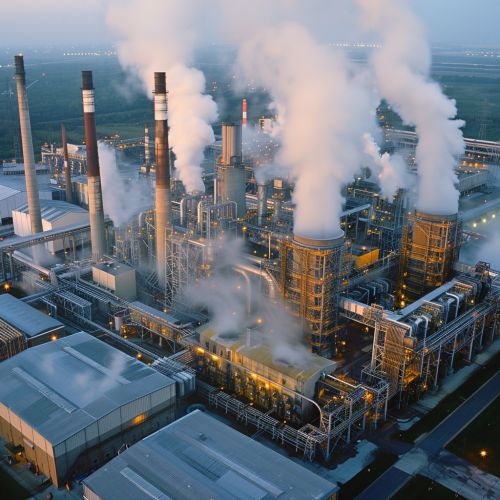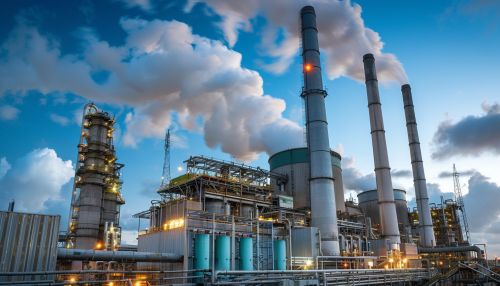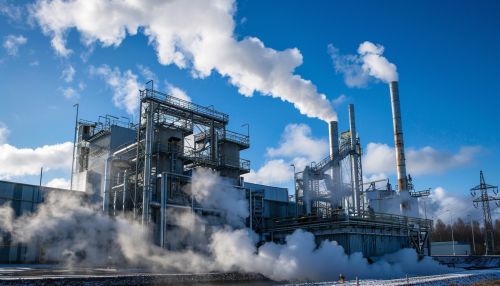Sulfur Dioxide Emissions and Their Environmental Impact
Introduction
Sulfur dioxide (SO2) is a colorless gas with a characteristic, irritating, pungent odor. It is a toxic gas that is released naturally by volcanic activity and through various industrial processes. Sulfur dioxide emissions have significant environmental impacts, including the formation of acid rain, deterioration of water quality, damage to vegetation, and contribution to atmospheric particulates that cause health problems and climate change.
Sources of Sulfur Dioxide Emissions
Sulfur dioxide is primarily produced from the combustion of fossil fuels like coal and oil in power plants or from the extraction of metals from ore. Other sources include industrial processes such as the production of sulfuric acid, cement manufacturing, and the burning of biomass.


Natural Sources
Volcanoes are a significant natural source of sulfur dioxide emissions. When a volcano erupts, it releases a large amount of sulfur dioxide into the atmosphere, which can have both local and global environmental impacts. Other natural sources include geysers, hot springs, and decaying organic matter.
Anthropogenic Sources
The majority of sulfur dioxide emissions are anthropogenic, or human-caused. These emissions primarily come from the burning of fossil fuels in power plants and other industrial processes. The combustion of coal and oil for electricity and heat is the largest single source of global sulfur dioxide emissions.
Environmental Impact of Sulfur Dioxide Emissions
Sulfur dioxide emissions have a wide range of environmental impacts, from local effects on air and water quality to global climate change.
Air Quality
Sulfur dioxide is a significant air pollutant. When it is released into the atmosphere, it can react with other substances to form harmful compounds such as sulfuric acid, ammonium sulfates, and fine particulate matter. These compounds can cause a variety of health problems, including respiratory issues, heart disease, and premature death.
Water Quality
Sulfur dioxide emissions can also have a significant impact on water quality. When sulfur dioxide is released into the atmosphere, it can dissolve in rainwater to form sulfuric acid, leading to acid rain. Acid rain can lower the pH of surface waters, harming aquatic life and damaging forests and other vegetation.
Vegetation and Wildlife
High concentrations of sulfur dioxide can damage plants and stunt growth. It can also harm animals, particularly those that live in water bodies affected by acid rain. In addition, sulfur dioxide can contribute to the formation of haze and smog, which can reduce visibility and negatively impact wildlife habitats.
Climate Change
Sulfur dioxide emissions can also contribute to climate change. When sulfur dioxide reacts with other substances in the atmosphere, it forms small particles that can reflect sunlight back into space, cooling the Earth's surface. However, these particles can also absorb sunlight and re-emit it as heat, warming the lower atmosphere. The net effect of these processes on the Earth's climate is complex and still not fully understood.
Regulation and Control of Sulfur Dioxide Emissions
Due to the significant environmental impacts of sulfur dioxide emissions, many countries have implemented regulations to control them. These regulations often involve setting limits on the amount of sulfur dioxide that can be emitted from specific sources, such as power plants and industrial facilities.


Technologies for Reducing Sulfur Dioxide Emissions
There are several technologies available for reducing sulfur dioxide emissions from industrial processes. These include flue gas desulfurization, which removes sulfur dioxide from the exhaust gases of power plants, and the use of low-sulfur fuels in vehicles and power plants.
Policy Measures
Policy measures for controlling sulfur dioxide emissions include emissions trading schemes, where companies are given a certain number of allowances for sulfur dioxide emissions and can buy or sell these allowances depending on their needs. Other policy measures include taxes on sulfur dioxide emissions and regulations requiring the use of emissions control technologies.
Conclusion
Sulfur dioxide emissions have significant environmental impacts, including air and water pollution, damage to vegetation and wildlife, and potential contributions to climate change. However, there are technologies and policy measures available that can help to reduce these emissions and mitigate their impacts.
